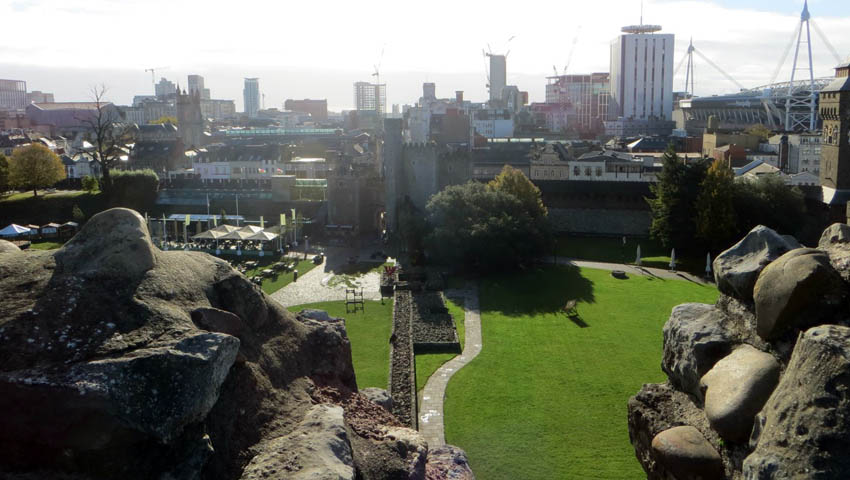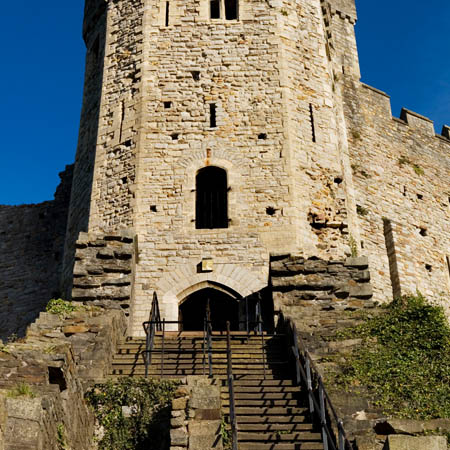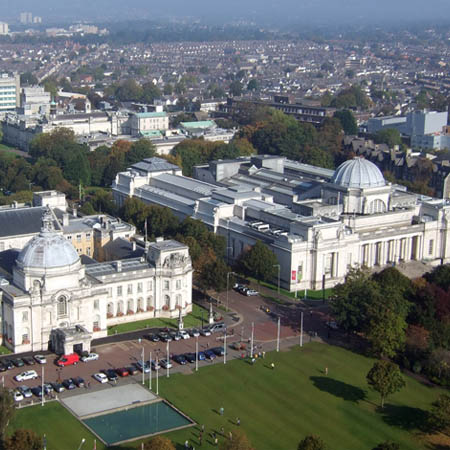What are you looking for?
10. View to the South

Here, at the summit, you can see some spectacular views of a city the early lords of the castle could never have imagined.
It’s a good place to stand and look back over Cardiff’s history.
Early settlers to Cardiff were drawn here by its position, close to the river Taff and to the Bristol Channel. On a clear day you may even be able to see as far as the Bristol Channel from here – even, sometimes, to the coast of North Devon beyond. Look directly beyond the main Castle entrance. In the distance is a red brick building with a gothic tower – to the left of the 2 tower blocks. It’s called the Pierhead Building. Beyond it, if you’re lucky, you might be able to spot the sea.
2,000 years ago, when Cardiff Castle was no more than a Roman fort, the sea was probably much closer to its southern wall. The fort was founded here – at the highest navigable point of the river. Its position near the sea meant that Cardiff was connected by trade with other parts of the Roman Empire, such as Italy, Spain and Gaul.
After the departure of the Romans, and throughout the Middle Ages, Cardiff was a modest river port town, dependant on the rich farmland of the Vale of Glamorgan. This fortified Castle stood right on the edge of the town.
It was in the 19th century that Cardiff underwent a huge industrial and commercial expansion. This growth was largely due to one man – the 2nd Marquess of Bute – owner of Cardiff Castle. He invested money in the canals and the railways, and constructed Cardiff’s docks: his efforts launched Cardiff into the industrial age.
Bute also owned the mineral rights to the coal that was mined here in huge quantities. By 1900, Cardiff was one of the world’s biggest coal shipping ports. Iron and timber were also exported from the docks here.
The Pierhead Building, in Cardiff Bay, once held the prestigious offices of the Bute Docks Company.
Today, the docks are less important but Cardiff continues to expand. It’s now a European Capital city. From here, you can see some of its new landmark buildings. To the left of the Pierhead Building, is the curved gold roofline of the Wales Millnennium Centre. Between them – though you can’t see it from here – is the Welsh Assembly Building – The Senedd – built in 2006. And, looming above the Castle’s Clock Tower, is the huge, spider-like form of The Principality Stadium, the home of Welsh Rugby.



